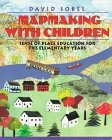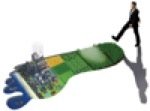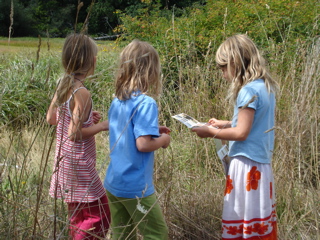|
Greening Geography — Connecting Students to Their WorldHelping students connect, by greening geography, to the world of their backyard, their schoolyard, their community, their bioregion and their nation and the whole planet ... ah, what a gift. And to do this with the sustainability of communities and the Earth in mind Since the beginning of humankind, the study of geography has captured the imagination of the people. In ancient times, geography books extolled tales of distant lands and dreamed-of treasures. The ancient Greeks created the word "geography" from the roots "gē" for earth and "graphia" for writing. These people experienced many adventures and needed a way to explain and communicate the differences between various lands. I would like to share two anecdotes with you to show that geography — "writing the earth" — is part of everyday life, and we need to honour it as such, instead of viewing it as "just another subject" with no special place or impact within sustainability education.
As my friend recounted that story, it struck me — THIS is geography as children experience it, as they live it! This is what environmental education guru David Sobel calls "a sense of place." In the beginning, children's maps represent their experiences of beauty, secrecy, adventure, and comfort. With these affective endeavors as a foundation, I then gradually start to focus on scale, location, direction, and geographic relationships. The development of emotional bonds and cognitive skills needs to go hand in hand in my approach to developmentally appropriate social studies and geography.
As if to prove that children love mapmaking, here is my second anecdote.
Who would have thought that making maps in geography class during elementary school could influence something so unrelated decades later? It's because geography is our walking (physical geography) and our talking (cultural geography), and it touches so many everyday aspects of our lives. Indeed, a textbook definition of geography might be "the study of the physical features of the Earth and its atmosphere, and of human activity as it affects and is affected by these." Now there's a definition — and a subject area — that doesn't leave anybody out! If a major goal of green schools is to model how core ecological and environmental concepts can be applied to create sustainable human communities, then greening geography is the perfect way to do this, and geography class is the perfect place and time. Geography teachers can contribute to greening geography and transformative sustainability education by helping their students


Greening Geography and Education for Sustainable Development (ESD) — ResourcesWhat follows are resources that focus on greening geography and integrating it with education for sustainable development (ESD), with discussion pieces and/or teaching ideas.
The best part of geography for me is that it gives us the opportunity to get "out there," to experience and sense the world and to interpret what we see. This is a good starting point for understanding our world and our role in helping to shape the future, as well as providing the basis for imagining alternative futures. — John Lyon Return from Greening Geography to Integration |

